#solarpunk youtube
Text
"Heat stored underground in caverns can be set aside in Finland’s summer months to be re-used during frigid winters thanks to a state-of-the-art ‘seasonal energy’ storage facility.
Slated for construction this summer near Helsinki, it will be the largest in the world by all standards and contain enough thermal energy to heat a medium-sized city all winter.
Thermal exchange heating systems, like those built underground, or domestic heat pumps, are seen as the most effective way available of reducing the climate-impact of home heating and cooling.
Their function relies on natural forces or energy recycling to cool down or heat up water and then using it to radiate hot or cold energy into a dwelling.
In Vantaa, Finland’s fourth largest city neighboring the capital of Helsinki, the ambitious Varanto seasonal energy storage project plans to store cheap and environmental friendly waste heat from datacenters, cooling processes, and waste-to-energy assets in underground caverns where it can be used to heat buildings via the district heating network whenever it is needed.
In Finland and other Nordic countries, the heat consumption varies significantly between seasons. Heat consumption in the summertime is only about one-tenth of the peak load consumption during the cold winter months.
Varanto will utilize underground caverns equal in space to two Maddison Square Gardens—over a million cubic meters—filled with water heated by this waste heat and pressure that will allow the water to reach temperatures of up to 300 degrees Fahrenheit without the water boiling or evaporating.
youtube
“The world is undergoing a huge energy transition. Wind and solar power have become vital technologies in the transition from fossil fuels to clean energy,” says Vantaa Energy CEO Jukka Toivonen.
“The biggest challenge of the energy transition so far has been the inability to store these intermittent forms of energy for later use. Unfortunately, small-scale storage solutions, such as batteries or accumulators, are not sufficient; large, industrial-scale storage solutions are needed. Varanto is an excellent example of this, and we are happy to set an example for the rest of the world.” ...
“Two 60-MW electric boilers will be built in conjunction with Varanto,” adds Toivonen. “These boilers will be used to produce heat from renewable electricity when electricity is abundant and cheap. Our heat-producing system will work like a hybrid car: alternating between electricity and other forms of production, depending on what is most advantageous and efficient at the time.”
... Construction of the storage facility’s entrance is expected to start in summer 2024, while it could be operational as early as 2028."
-via Good News Network, April 12, 2024. Video via VantaanEnergia, March 10, 2024
#solarpunk#heat pump#renewable energy#heating#finland#energy transition#climate change#climate hope#good news#hope#helsinki#clean energy#Youtube
397 notes
·
View notes
Text



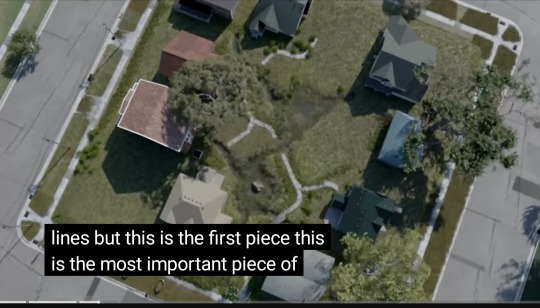

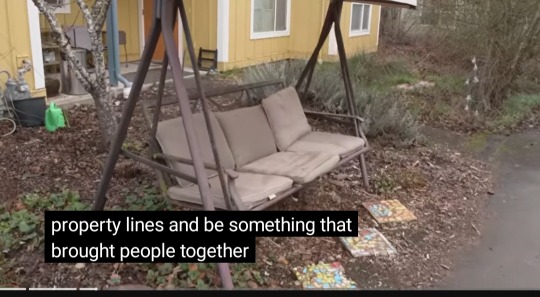

youtube
#city planning#permaculture#solarpunk#functional supply chains#architecture#suburban planning#futurism#Youtube
448 notes
·
View notes
Text
youtube
"The punk in both solarpunk and cyberpunk refer to rebellion."
Dami Lee. Always interesting.
181 notes
·
View notes
Text




How To video
youtube
#solarpunk#solar punk#solarpunk aesthetic#cat damaged furniture#embroidery#repair#kintsugi#core77#Youtube
45 notes
·
View notes
Text
Soo,
I've been following the Precious Plastic project for a while now: it's a project for small scale plastic recycling, based on sharing knowledge open source so that anybody in the world can access it for free.
I think i'll write more about this in the future, i totally love what they're doing, but recently the project celebrated its 10 year anniversary and they made a lovely recap video. I think more people should see it: precious plastic has a superstrong real life community, but their youtube channel doesn't have that big of an audience because it was started only one year and a half ago. So,
Here's the link:
youtube
And i hope it will reach as many people as possible!
#precious plastic#plastic recycling#community#sustainability#solarpunk#recycling#recycled plastic#how am i supposed to use these tags#Youtube
159 notes
·
View notes
Text
youtube
How the UN is Holding Back the Sahara Desert
Permaculture instructor Andrew Millison journeys with the UN World Food Programme to the Northern border of Senegal to see an innovative land recovery project within the Great Green Wall of Africa that is harvesting rainwater, increasing food security, and rehabilitating the ecosystem.
#solarpunk#senegal#niger#permaculture#great green wall#africa#landscape#rehabilitation#Great Green Wall of Africa#rainwater harvesting#Youtube
141 notes
·
View notes
Text
youtube
Episode 2.6 is on YouTube!
Erin Alladin’s new e-book “Gentle Gardening: A Guide for Uncooperative Bodies” is transformative, specifically covering the issues of gardening with chronic fatigue and the other complex disabilities that can accompany it, and reframing gardening as an accessible and fun activity. Ariel talks to Erin in this episode about her journey with gardening to where she is now, the book, a bit about gardening on Turtle Island as a settler, and tackling the gardener’s mindset and impostor syndrome that may come with it.
#solarpunk#spoonie#gardening#spoonie gardening#POTS syndrome#Gentle Gardening#gardening with disabilities#podcast#interview podcast#solarpunk podcast#interview#Erin Alladin#EarthUndaunted#gardening self-care tips#gardener#community#community gardening#POTS#spoonies#crafting#DIY#Youtube
88 notes
·
View notes
Text
Mushroom Materials
I cannot stop thinking about how compressed mycelium bricks could change the world. They are twice as strong as concrete, load bearing, anti vibrational, fireproof and can easily be made waterproof the same way you would with wood.
You could technically grow it into any shape you want.
I really would love to make cool semi camouflaged pod shelters for the homeless around town, so they have a safe place to sleep during the night, where they can lock the door so they're not at risk of being attacked or perceived/shunned.
Many homeless people are also neurodivergent and mentally ill and we all know how awful it is as a ND to not have your own space where no one can access you without your consent.
It could also make cool walk and cycleways above roads, to give people a safe way of going about so they don't risk getting hit by cars.
It could change everything.
Here's a video and website about it
youtube
#hopecore#hopepunk#solarpunk#peaceful revolution#greenhorizon#anti capitalism#climate change solutions#naturecore#forestcore#lunarpunk#mycelium#fungi#mushrooms#mycology#construction#housing#text#my text#homelessness#poverty#housing crisis#Youtube
49 notes
·
View notes
Text
Solarpunk Singapore
We talk about solarpunk like it's a dream, but Singapore is already living the dream. As of 2018 all new large buildings have to meet a standard of sustainability, with the goal to "green" 80% of the capital city by 2030.
Oasia Hotel

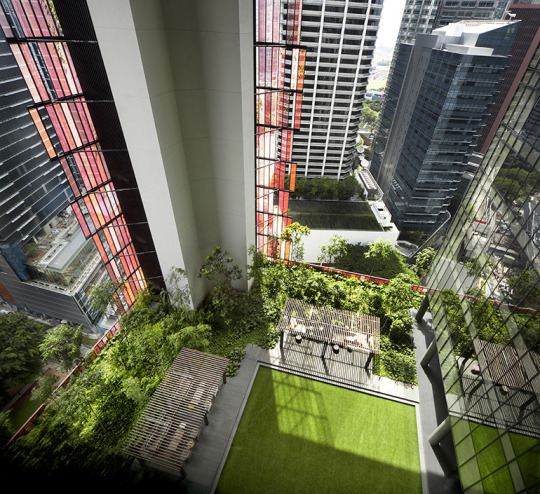
youtube
Gardens by the Bay
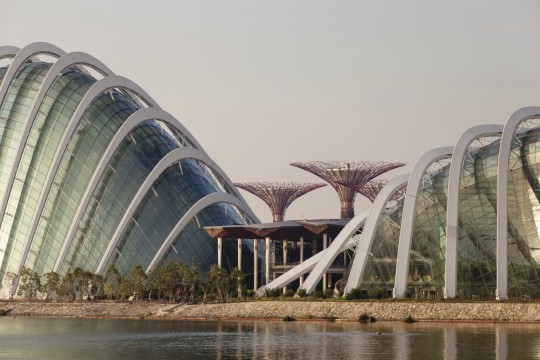

youtube
ParkRoyal Hotel


youtube
CapitaGreen Office Tower

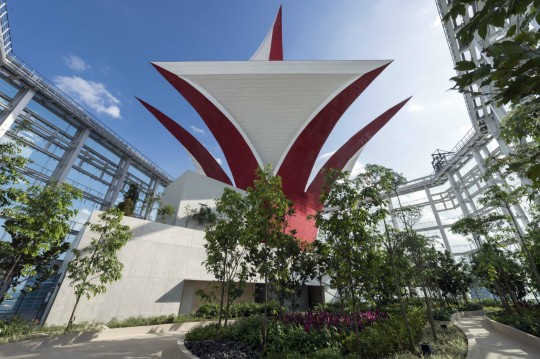
Kampung Admiralty Senior Housing and Services, named World Building of the Year in 2018


Solarpunk isn't just a dream anymore.
ETA Here's a video about Kampung Admiralty.
youtube
#solarpunk#solar#ecopunk#architecture#eco architect#sustainability#sustainable#sustainable architecture#Youtube
154 notes
·
View notes
Text
What Kind of Plants to Add
This is my sixth post in a series I’ll be making on how to increase biodiversity on a budget! I’m not an expert–just an enthusiast–but I hope something you find here helps!
I’d love to be able to give a quick and easy list of things to add, but frankly I can’t do that. I can strongly encourage you, however, to look at these categories of plants and do further research to discover what’s native to your area, so you can plant things that’ll have the most impact in your particular area.
With that being said, I will mention a few plants as examples. This is in no way, shape, or form me telling you that you have to or even should buy these specific plants. Not every plant works well in every place in every garden, not to even mention across countries. Above all, if you’re wondering what plants you should be adding, I can wholeheartedly say plants that are native to your area--or at least nonnative non-invasive.
Flowers
Flowers are some of the most common ways people work to increase biodiversity in their gardens, and who can blame them? Seeing pops of color out your window, and directly seeing the impact via butterflies and bees visiting the garden? It’s a win-win for us and the wildlife!
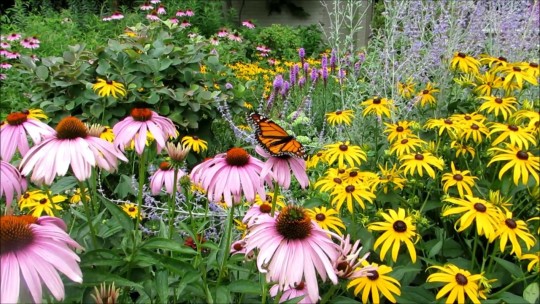
Flowers--especially native wildflowers--are a quick, easy, and cheap way to increase wildlife traffic in your garden. Perennial gardens are more likely to get you the most bang for your buck, as they’ll come back year after year if you treat them well. But don’t dismiss annuals--if you get ones that easily reseed, they’ll eagerly return on their own! If you can, do your best to ensure that the flowers you plant all have different blooming periods--that way, your garden can support wildlife throughout the year instead of for just one brief season.
Flowers are environmental super boosters. Their nectar and pollen can feed insects and birds, their stems and leaves can provide nesting materials for all sorts of creatures, and their seeds are a popular food source among birds at all times of the year.
Climbing Plants
Climbing plants can be fantastic options for maximizing your impact. If you have limited ground space, growing up can provide interest as well as additional habitat for all kinds of creatures.
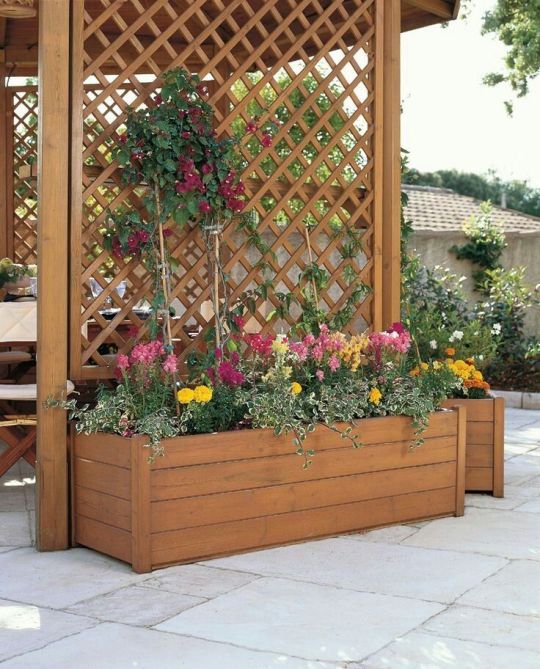
Training plants up a trellis, fence, or bare wall offers food, shelter, and habitat. Trumpet vines, passionflowers, honeysuckles, and more will provide sweet nectar for pollinators as well as nesting and hiding spaces for other wildlife like birds, bugs, and lizards. Do note that in some cases, climbing plants can actually affect the structural integrity of walls and roofs if allowed to climb too much and too far along a house, so be careful.
Bushes/Shrubs
Bushes provide shelter for creatures, which then provides hunting grounds for other animals. Their fallen leaves and petals can be food and shelter for detritivores, amphibians, reptiles, and small mammals--and they also provide good cover for moving around the garden, for creatures who like to stay hidden. They can be a bit more pricey to obtain--unless you get cuttings or seeds and are willing to wait--but they’ll definitely be worth it, and they’re typically low-maintenance once they’re established.
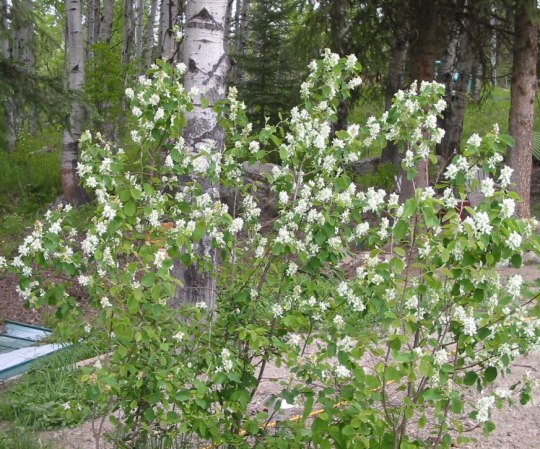
Bonus points if you get a flowering and fruiting bush, like bottlebrush, serviceberry, lilac, or others. This’ll make your bushes not only a place of shelter, but a food source as well--and depending on the kind you pick, may be food for you too! Making a garden border with a series of bushes can be a great option to providing lots of habitat, if you can manage it.
Shrubs with pithy or hollow stems are excellent options for supporting solitary bees. Some examples you could look into are elderberry, raspberry, blackberry, or sumac.
Trees
Trees have a high up-front cost and take awhile to grow, but once they’re settled in place they provide crucial habitat to all kinds of creatures! Insects will be attracted to flowers they may provide, or to nest in the wood. Others may eat the leaves as food, or use them as nesting materials. Birds will perch and nest in trees, and feed off the fruits and seeds and insects that also use the tree. Squirrels also use trees as nesting places, piling up dead leaves into huge clusters to raise their young in, and will absolutely feast on any nuts the tree may provide. Mice, badgers, and more will feast on fallen fruits or seeds, and bats roost in the trunks when given the chance. Detritivores eat fallen leaves and decomposing fruits, providing further food for hunting creatures. Trees can also be good for us--they help block out noise and air pollution, and are the poster child for taking CO2 and making it breathable oxygen. Not to mention they can provide plenty of food for us, too. Nesting grounds, hunting grounds, shelter from weather, and more--trees are, in my opinion, likely to be the best way to boost biodiversity long-term. If you can get your hands on a sapling for cheap and can care for it for awhile, I’d definitely give it a shot! Make sure the tree won’t get too big for where you’re growing it, though--you’ve definitely gotta plan for the long-term before you plant any.
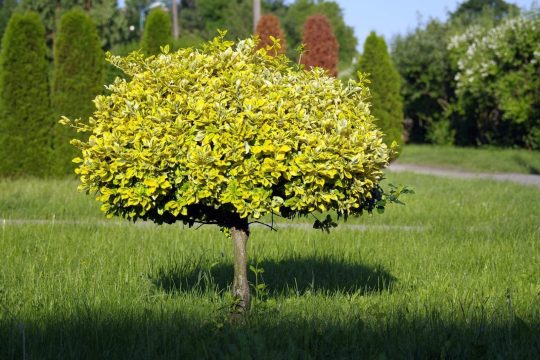
Some trees can be grown in containers. Though they won’t become gigantic branching behemoths, they’ll still do their part to support all the life that depends on them. Growing a tree from seed may take awhile, but could be an easy option to getting one if you have the patience--the trees are more than happy to help you, as they drop tons of seeds and fruit in fall for you to gather.
Groundcover
Bare soil is the enemy of microbial life in the soil, and while small pockets of bare soil can be great nesting places for bees and other insects, having swaths of empty soil should be avoided. Groundcover plants grow low to the ground in a sprawling habit, and will often spread quite easily on their own. This is a great way to provide shelter, keep soil temperatures cool, block out weeds, and give your soil life a chance to thrive.

Sometimes, ground covers don’t even have to be planted in the ground. Shallow-rooted plants like succulents, ferns, and alyssum can be planted into cracks in stone walls, and moss can be planted by making moss graffiti and painting it onto a surface. As with climbing plants, do make sure that you don’t cause extra damage to important walls and housing foundations.
Host Plants
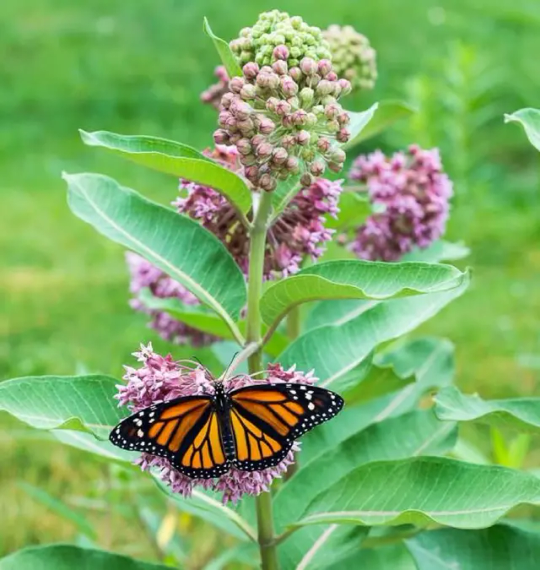
Host plants get their own section, because plants of all kinds can be host plants for different creatures! It’s common to think only flowers can be host plants in the beginning, but in reality, many bushes and trees are host plants to dozens of species of butterflies and moths. Honestly, I feel that factor's not talked about enough. Look up what insects live in your area and what kind of host plants they need, and plant some if you can! Bonus points if you can plant a variety of them--I know that there’s hundreds of kinds of milkweed, each one flowering and leafing up around different times of the year. Planting several varieties of milkweed, then, would provide monarchs with food through several seasons, allowing many more of them to grow up in your garden!
Nectar Plants
Plants that provide nectar to insects is a great foundation to increasing biodiversity! This is, of course, many native wildflowers (and even nonnative wildflowers, though be sure they aren’t invasives who’ll do more harm than good), but many native bushes, vines, and trees will also provide nectar to hungry pollinators!
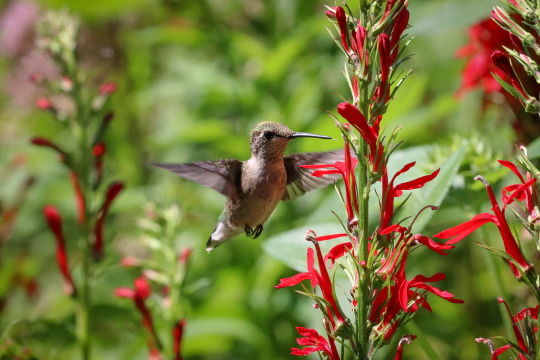
Keystone Species
To be frank, some plants can have a bigger impact than others in a landscape. By all means, every bit helps, but if you want to boost biodiversity quickly there are a few plants that can essentially serve as the backbone of local ecosystems that you can grow in anything from a balcony pot to a small patch of your backyard. These plants can be different depending on where you are, so do your research to find out what would be best to grow in your area. If you can’t get them all? That’s alright! But even hitting just a few of these target species really can do a lot.
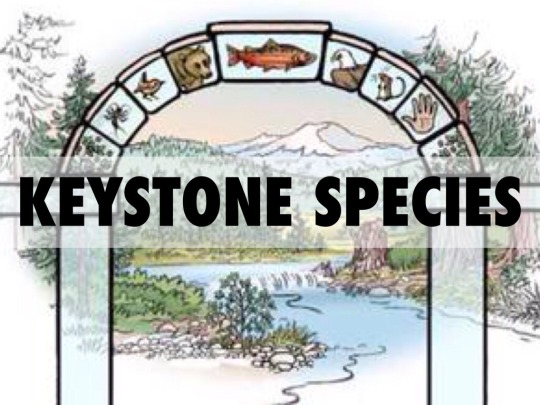
That’s the end of this post! My next post is gonna be about things to keep in mind/continue to do once you get plants in the ground! Until then, I hope this advice was helpful! Feel free to reply with any questions, your success stories, or anything you think I may have forgotten to add in!
#biodiversity#solarpunk#gardening#outdoor gardening#ani rambles#out of queue#the biodiversity saga#sorry its been 2 months since I last posted to this series#I literally have everything drafted out I just got Busy because maannnnnnn animating a grad school capstone project all by yourself....#i should really start using my youtube channel to post my animations but they never feel Done so I just Dont#i dont have as many links in this one because... they weren't in the draft and any tumblr posts that came to mind I couldn't hunt down#either way i hope this was Helpful and Lit and All That Jazz#I might just post the other parts tomorrow so I can stop having that hanging over my head#and so I can get my sources masterpost out there so people can like. see I'm trying my best not to just talk out of my ass#anyways see yall
157 notes
·
View notes
Text
youtube
Things you can make from old, dead laptops
57 notes
·
View notes
Text
youtube
You can grow tanks, rather than buy them, and they'll have a lot more water-harvesting capacity.
This video is about how living sponges (rain gardens) have far greater capacity than non-living manufactured water tanks, in that they utilize and infiltrate water during and immediately after rains to quickly make more room or capacity for the next rain - even if that rain comes just a few hours after the first rain.
Thus rain gardens (in this case, a water-harvesting, traffic-calming chicane or pull out) typically have much more potential for flood-control, groundwater-recharge, bioremediation (natural filtration of toxins), and heat-island abatement (due to the shading/cooling vegetation they grow and the cooling effect of the water transpiring through these "living pumps").
This works in any climate, but the vegetation changes as you change bioregions. The easiest path to success is to use plants native or indigenous to your area and site's microclimate. Go further, and select native plants that also produce food, medicine, craft/building materials, etc so you grow living pantries, pharmacies, craft suppliers, etc.
At minimum, make sure your tanks overflow to rain gardens, so that overflow is used as a resource. And place those rain gardens and their vegetation where you most need that vegetation, such as trees on the east and west sides of buildings to shade out the morning and afternoon summer sun for free, passive cooling.
The ideal, is that once this rain garden vegetation has become established the only irrigation water it will require is the freely harvested on-site water, so no importing/extracting of groundwater, municipal water, or other is needed. This way we can infiltrate more water into the living system than we take out - thereby enabling the recharge of groundwater, springs, and rivers; instead of their depletion and dehydration.
Get more info on how to do this and harvest many other free, on-site waters at:
https://www.harvestingrainwater.com/
where you can buy Brad's award-winning books, "Rainwater Harvesting for Drylands and Beyond" at deep discount direct from Brad at:
https://www.harvestingrainwater.com/s...
For more info on the community water harvesting and native food forestry work check out:
https://dunbarspringneighborhoodfores...
For more videos that expand on this one subscribe to this channel at:
http://www.youtube.com/user/Harvestin...
#rainwater
#waterharvesting
#permaculture
#rainwaterharvesting
#Brad Lancaster#solarpunk#permaculture#rain garden#water#rainwater harvesting#rainwater#water harvesting#rain water harvesting#rain water#garden#plants#native plants#native species#groundwater#Youtube
566 notes
·
View notes
Text
ah yes, nothing like a video about solarpunk where every single one of the hundred or so images used in the video is ai generated

#gross#solarpunk#ai art#the youtuber is human restoration project if you want to avoid them like i will now be doing
24 notes
·
View notes
Text
How Solarpunk Envisions A World We Will Want To Live In | Ecogradia
I was recently invited to join Nirmal Kishnani on season 5 of EcoGradia, the architecture and sustainability podcast, to talk about Solarpunk.
youtube
We had a great conversation about Solarpunk, its visions for the world, and the challenges we face in building sustainable futures. I talked about the role of storytelling, design, and technology in imagining better futures, and how solarpunk can tangible action today.
#architecture#ecogradia#interview#Nirmal Kishnani#podcast#solar punk#solarpunk#sustainability#Youtube
20 notes
·
View notes
Text
youtube
A roundtable and reportback on the revolution in North and East Syria (Rojava) from last year by the Institute for Social Ecology, well worth watching!
#anarchism#socialism#communalism#solarpunk#social ecology#democratic confederalism#rojava#syria#Youtube
20 notes
·
View notes
Video
youtube
Good News in March (you might have missed)
44 notes
·
View notes